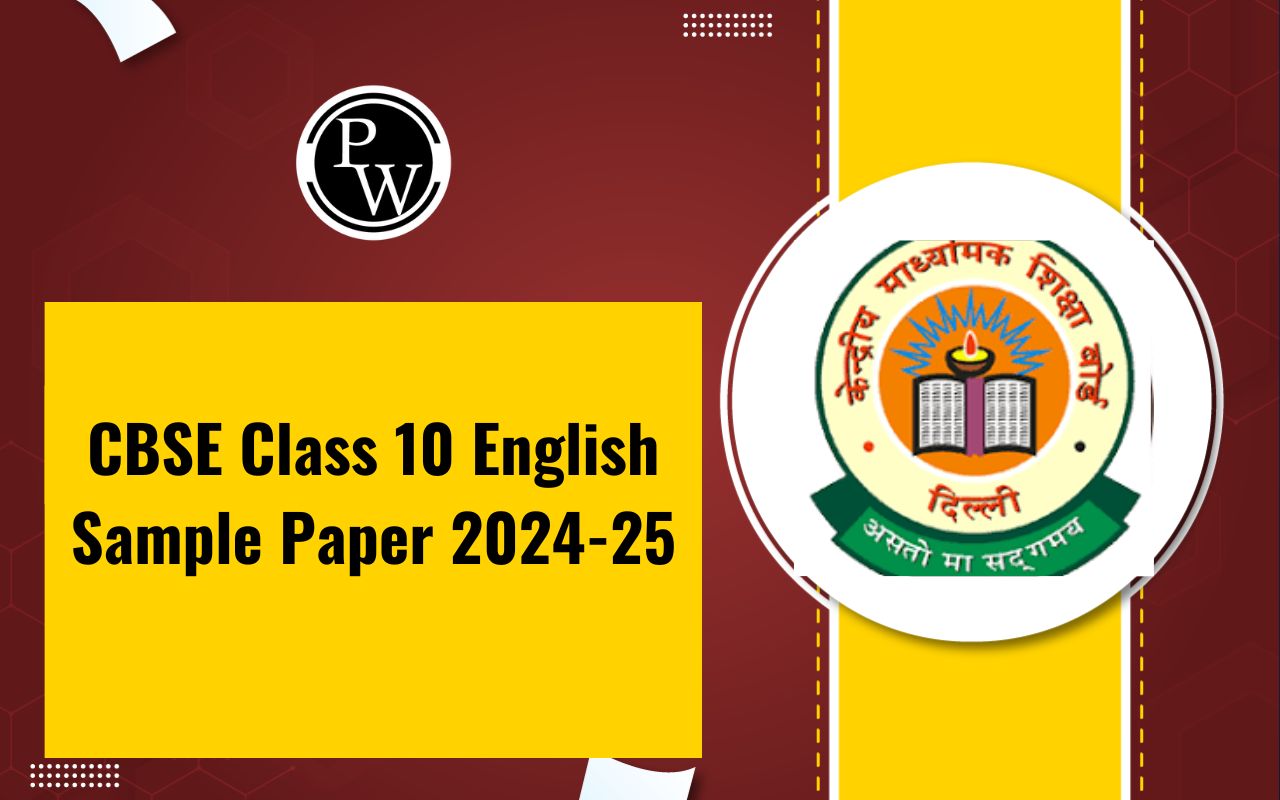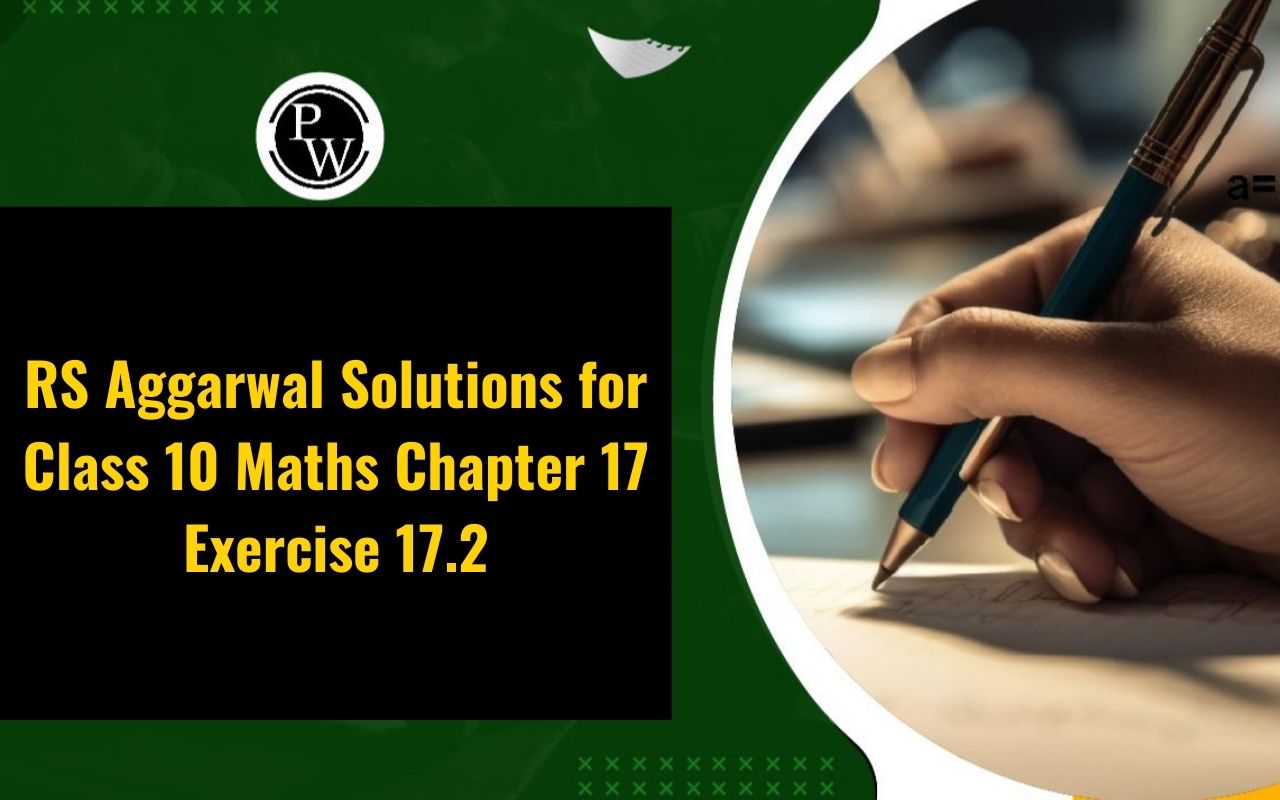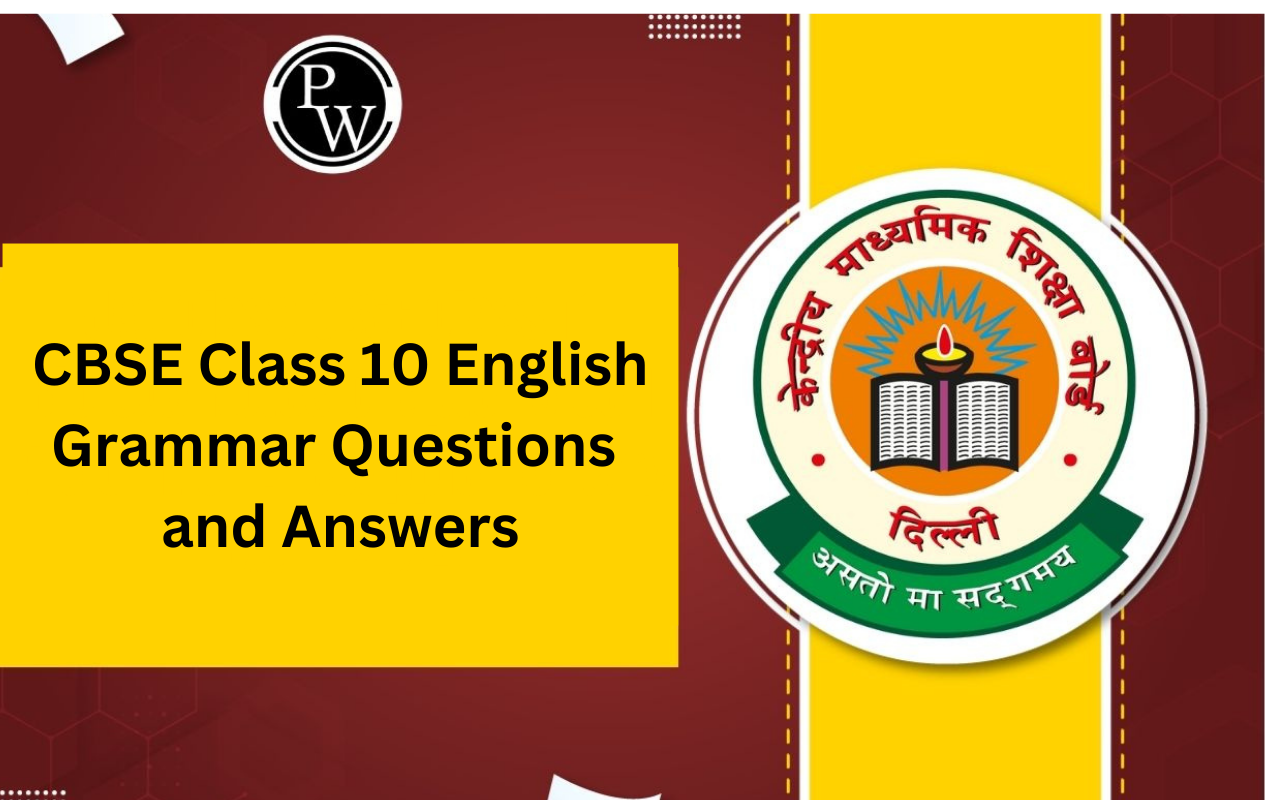

RD Sharma Solutions Class 10 Maths Chapter 3 Exercise 3.11: Chapter 3, Exercise 3.11 in RD Sharma’s Class 10 Maths focuses on the "Pair of Linear Equations in Two Variables." This exercise deals with solving linear equations, analyzing their solutions, and understanding how they graphically represent lines on the coordinate plane. Students explore various methods for finding solutions, such as substitution, elimination, and cross-multiplication.
The exercise also introduces the concepts of consistent, inconsistent, and dependent pairs of equations, helping students determine whether equations intersect, are parallel, or coincide. This chapter builds a foundation for solving real-life problems involving linear equations, enhancing logical thinking and problem-solving skillsRD Sharma Solutions Class 10 Maths Chapter 3 Exercise 3.11 Overview
Chapter 3, Exercise 3.11 in RD Sharma’s Class 10 Maths book covers the topic of solving pairs of linear equations in two variables. This concept is crucial as it forms the foundation for understanding complex algebraic equations and real-world problem-solving situations involving relationships between two quantities. By solving linear equations in pairs, students learn methods such as substitution, elimination, and cross-multiplication, which enhance their analytical and logical skills. Mastery of these techniques is essential not only for higher-level algebra but also for applications in economics, physics, and engineering, where interpreting and analyzing variable relationships is fundamental.RD Sharma Solutions Class 10 Maths Chapter 3 Ex 3.11 PDF
Below, we have provided the PDF for RD Sharma Solutions for Class 10 Maths, Chapter 3, Exercise 3.11, which covers the topic of Pair of Linear Equations in Two Variables. This exercise includes solved examples and step-by-step solutions to help students understand the methods for solving linear equations, enhancing their problem-solving skills and mathematical foundation in this topic.RD Sharma Solutions Class 10 Maths Chapter 3 Exercise 3.11 PDF
RD Sharma Solutions Class 10 Maths Chapter 3 Exercise 3.11 Pair of Linear Equations in Two Variables
Below is the RD Sharma Solutions Class 10 Maths Chapter 3 Exercise 3.11 Pair of Linear Equations in Two Variables -1. If in a rectangle, the length is increased and breadth reduced each by 2 units, the area is reduced by 28 square units. If, however the length is reduced by 1 unit and the breadth increased by 2 units, the area increases by 33 square units. Find the area of the rectangle.
Solution:
Let’s assume the length and breadth of the rectangle be x units and y units, respectively. Hence, the area of rectangle = xy sq. units From the question we have the following cases, Case 1: Length is increased by 2 units ⇒ now, the new length is x+2 units Breadth is reduced by 2 units ⇒ now, the new breadth is y-2 units And it’s given that the area is reduced by 28 square units i.e., = xy – 28 So, the equation becomes (x+2)(y−2) = xy − 28 ⇒ xy − 2x + 2y – 4 = xy − 28 ⇒ −2x + 2y – 4 + 28 = 0 ⇒ −2x + 2y + 24 = 0 ⇒ 2x − 2y – 24 = 0 ……… (i) Case 2: Length is reduced by 1 unit ⇒ now, the new length is x-1 units Breadth is increased by 2 units ⇒ now, the new breadth is y+2 units And, it’s given that the area is increased by 33 square units i.e. = i.e. = xy + 33 So, the equation becomes (x−1)(y+2) = xy + 33 ⇒ xy + 2x – y – 2 = x + 33 ⇒ 2x – y − 2 − 33 = 0 ⇒ 2x – y −35 = 0 ……….. (ii) Solving (i) and (ii), By using cross multiplication, we get x = 46/2 x = 23 And, y = 22/2 y = 11 Hence, The length of the rectangle is 23 units. The breadth of the rectangle is 11 units. So, the area of the actual rectangle = length x breadth, = x×y = 23 x 11 = 253 sq. units Therefore, the area of rectangle is 253 sq. units.
x = 46/2 x = 23 And, y = 22/2 y = 11 Hence, The length of the rectangle is 23 units. The breadth of the rectangle is 11 units. So, the area of the actual rectangle = length x breadth, = x×y = 23 x 11 = 253 sq. units Therefore, the area of rectangle is 253 sq. units.
2. The area of a rectangle remains the same if the length is increased by 7 metres and the breadth is decreased by 3 metres. The area remains unaffected if the length is decreased by 7 metres and the breadth is increased by 5 metres. Find the dimensions of the rectangle.
Solution:
Let’s assume the length and breadth of the rectangle be x units and y units, respectively. Hence, the area of rectangle = xy sq.units From the question we have the following cases, Case 1 Length is increased by 7 metres ⇒ now, the new length is x+7 Breadth is decreased by 3 metres ⇒ now, the new breadth is y-3 And it’s given, the area of the rectangle remains the same i.e. = xy. So, the equation becomes xy = (x+7)(y−3) xy = xy + 7y − 3x − 21 3x – 7y + 21 = 0 ………. (i) Case 2: Length is decreased by 7 metres ⇒ now, the new length is x-7 Breadth is increased by 5 metres ⇒ now, the new breadth is y+5 And it’s given that, the area of the rectangle still remains the same i.e. = xy. So, the equation becomes xy = (x−7)(y+5) xy = xy − 7y + 5x − 35 5x – 7y – 35 = 0 ………. (ii) Solving (i) and (ii), By using cross-multiplication, we get, x = 392/14 x = 28 And, y = 210/14 y = 15 Therefore, the length of the rectangle is 28 m. and the breadth of the actual rectangle is 15 m.
x = 392/14 x = 28 And, y = 210/14 y = 15 Therefore, the length of the rectangle is 28 m. and the breadth of the actual rectangle is 15 m.
| CBSE Class 10 English Sample Paper 2024-25 | CBSE Class 10 Maths Sample Paper 2024-25 |
| CBSE Class 10 Social Science Sample Paper 2024-25 | CBSE Class 10 Science Sample Paper 2024-25 |
3. In a rectangle, if the length is increased by 3 metres and breadth is decreased by 4 metres, the area of the triangle is reduced by 67 square metres. If length is reduced by 1 metre and breadth is increased by 4 metres, the area is increased by 89 sq. metres. Find the dimension of the rectangle.
Solution:
Let’s assume the length and breadth of the rectangle be x units and y units, respectively. Hence, the area of rectangle = xy sq.units From the question we have the following cases, According to the question, Case 1: Length is increased by 3 metres ⇒ now, the new length is x+3 Breadth is reduced by 4 metres ⇒ now, the new breadth is y-4 And it’s given, the area of the rectangle is reduced by 67 m 2 = xy – 67. So, the equation becomes xy – 67 = (x + 3)(y – 4) xy – 67 = xy + 3y – 4x – 12 4xy – 3y – 67 + 12 = 0 4x – 3y – 55 = 0 —— (i) Case 2: Length is reduced by 1 m ⇒ now, the new length is x-1 Breadth is increased by 4 metre ⇒ now, the new breadth is y+4 And it’s given, the area of the rectangle is increased by 89 m 2 = xy + 89. Then, the equation becomes xy + 89 = (x -1)(y + 4) 4x – y – 93 = 0 —— (ii) Solving (i) and (ii), Using cross multiplication, we get x = 224/8 x = 28 And, y = 152/8 y = 19 Therefore, the length of rectangle is 28 m and the breadth of rectangle is 19 m.
x = 224/8 x = 28 And, y = 152/8 y = 19 Therefore, the length of rectangle is 28 m and the breadth of rectangle is 19 m.
4. The income of X and Y are in the ratio of 8: 7 and their expenditures are in the ratio 19: 16. If each saves ₹ 1250, find their incomes.
Solution:
Let the income be denoted by x and the expenditure be denoted by y. Then, from the question we have The income of X is ₹ 8x and the expenditure of X is 19y. The income of Y is ₹ 7x and the expenditure of Y is 16y. So, on calculating the savings, we get Saving of X = 8x – 19y = 1250 Saving of Y = 7x – 16y = 1250 Hence, the system of equations formed are 8x – 19y – 1250 = 0 —– (i) 7x – 16y – 1250 = 0 —– (ii) Using cross-multiplication method, we have x = 3750/5 x = 750 If, x = 750, then The income of X = 8x = 8 x 750 = 6000 The income of Y = 7x = 7 x 750 = 5250 Therefore, the income of X is ₹ 6000 and the income of Y is ₹ 5250
x = 3750/5 x = 750 If, x = 750, then The income of X = 8x = 8 x 750 = 6000 The income of Y = 7x = 7 x 750 = 5250 Therefore, the income of X is ₹ 6000 and the income of Y is ₹ 5250
5. A and B each has some money. If A gives ₹ 30 to B, then B will have twice the money left with A. But, if B gives ₹ 10 to A, then A will have thrice as much as is left with B. How much money does each have?
Solution:
Let’s assume the money with A be ₹ x and the money with B be ₹ y. Then, from the question we have the following cases Case 1: If A gives ₹ 30 to B, then B will have twice the money left with A. So, the equation becomes y + 30 = 2(x – 30) y + 30 = 2x – 60 2x – y – 60 – 30 = 0 2x – y – 90 = 0 —— (i) Case 2: If B gives ₹ 10 to A, then A will have thrice as much as is left with B. x + 10 = 3(y – 10) x + 10 = 3y – 10 x – 3y + 10 + 30 = 0 x – 3y + 40 = 0 —— (ii) Solving (i) and (ii), On multiplying equation (ii) with 2, we get, 2x – 6y + 80 = 0 Subtract equation (ii) from (i), we get, 2x – y – 90 – (2x – 6y + 80) = 0 5y – 170 =0 y = 34 Now, on using y = 34 in equation (i), we find, x = 62 Hence, the money with A is ₹ 62 and the money with B be ₹ 34
7. 2 men and 7 boys can do a piece of work in 4 days. The same work is done in 3 days by 4 men and 4 boys. How long would it take one man and one boy to do it?
Solution:
Assuming that the time required for a man alone to finish the work be x days and also the time required for a boy alone to finish the work be y days. Then, we know The work done by a man in one day = 1/x The work done by a boy in one day = 1/y Similarly, The work done by 2 men in one day = 2/x The work done by 7 boys in one day = 7/y So, the condition given in the question states that, 2 men and 7 boys together can finish the work in 4 days 4(2/x + 7/y) = 1 8/x + 28/y = 1 ——–(i) And, the second condition from the question states that, 4 men and 4 boys can finish the work in 3 days For this, the equation so formed is 3(4/x + 4/y) = 1 12/x + 12/y = 1 ——–(ii) Hence, solving (i) and (ii) ⇒ Taking, 1/x = u and 1/y = v So, the equations (i) and (ii) becomes, 8u + 28v = 1 12u + 12v = 1 8u + 28v – 1 = 0 —— (iii) 12u + 12v – 1 = 0 —— (iv) By using cross multiplication, we get, u = 1/15 1/x = 1/15 x = 15 And, v = 1/60 1/y = 1/60 y = 60 Therefore, The time required for a man alone to finish the work is 15 days and the time required for a boy alone to finish the work is 60 days.8. In a Δ ABC, ∠ A = x o , ∠ B = (3x – 2) o , ∠ C = y o . Also, ∠ C – ∠ B = 9 o . Find the three angles.
Solution:
It’s given that, ∠A = x o , ∠B = (3x – 2) o , ∠C = y o Also given that, ∠C – ∠B = 9 o ⇒ ∠C = 9 ∘ + ∠B ⇒ ∠C = 9 ∘ + 3x ∘ − 2 ∘ ⇒ ∠C = 7 ∘ + 3x ∘ Substituting the value for ∠C = y o in above equation we get, y o = 7 o + 3x o We know that, ∠A + ∠B + ∠C = 180 o (Angle sum property of a triangle) ⇒ x ∘ + (3x ∘ − 2 ∘ ) + (7 ∘ + 3x ∘ ) = 180 ∘ ⇒ 7x ∘ + 5 ∘ = 180 ∘ ⇒ 7x ∘ = 175 ∘ ⇒ x ∘ = 25 ∘ Hence, calculating for the individual angles we get, ∠A = x o = 25 o ∠B = (3x – 2) o = 73 o ∠C = (7 + 3x) o = 82 o Therefore, ∠A = 25 o , ∠B = 73 o and ∠C = 82 o .9. In a cyclic quadrilateral ABCD, ∠ A = (2x + 4) o , ∠ B = (y + 3) o , ∠ C = (2y + 10) o , ∠ D = (4x – 5) o . Find the four angles.
Solution:
We know that, The sum of the opposite angles of cyclic quadrilateral should be 180 o . And, in the cyclic quadrilateral ABCD, Angles ∠A and ∠C & angles ∠B and ∠D are the pairs of opposite angles. So, ∠A + ∠C = 180 o and ∠B + ∠D = 180 o Substituting the values given to the above two equations, we have For ∠A + ∠C = 180 o ⇒ ∠A = (2x + 4) o and ∠C = (2y + 10) o 2x + 4 + 2y + 10 = 180 o 2x + 2y + 14 = 180 o 2x + 2y = 180 o – 14 2x + 2y = 166 —— (i) And for, ∠B + ∠D = 180 o , we have ⇒ ∠B = (y+3) o and ∠D = (4x – 5) o y + 3 + 4x – 5 = 180 o 4x + y – 5 + 3 = 180 o 4x + y – 2 = 180 o 4x + y = 180 o + 2 o 4x + y = 182 o ——- (ii) Now for solving (i) and (ii), we perform Multiplying equation (ii) by 2 to get, 8x + 2y = 364 —— (iii) And now, subtract equation (iii) from (i) to get -6x = -198 x = −198/ −6 ⇒ x = 33 o Now, substituting the value of x = 33 o in equation (ii) to find y 4x + y = 182 132 + y = 182 y = 182 – 132 ⇒ y = 50 Thus, calculating the angles of a cyclic quadrilateral we get: ∠A = 2x + 4 = 66 + 4 = 70 o ∠B = y + 3 = 50 + 3 = 53 o ∠C = 2y + 10 = 100 + 10 = 110 o ∠D = 4x – 5 = 132 – 5 = 127 o Therefore, the angles of the cyclic quadrilateral ABCD are ∠A = 70 o , ∠B = 53 o , ∠C = 110 o and ∠D = 127 o
10. Yash scored 40 marks in a test, getting 3 marks for each right answer and losing 1 mark for each wrong answer. Had 4 marks been awarded for each correct answer and 2 marks been deducted for each incorrect answer, then Yash would have scored 50 marks. How many questions were there in the test?
Solution:
Let’s assume that the total number of correct answers be x and the total number of incorrect answers be y. Hence, their sum will give the total number of questions in the test i.e. x + y Further from the question, we have two type of marking scheme: 1) When 3 marks is awarded for every right answer and 1 mark deducted for every wrong answer. According to this type, the total marks scored by Yash is 40. (Given) So, the equation formed will be 3x – 1y = 40 ….. (i) Next, 2) When 4 marks is awarded for every right answer and 2 marks deducted for every wrong answer. According to this type, the total marks scored by Yash is 50. (Given) So, the equation formed will be 4x – 2y = 50 …… (ii) Thus, by solving (i) and (ii) we obtained the values of x and y. From (i), we get y = 3x – 40 …….. (iii) Using (iii) in (ii) we get, 4x – 2(3x – 40) = 50 4x – 6x + 80 = 50 2x = 30 x = 15 Putting x = 14 in (iii) we get, y = 3(15) – 40 y = 5 So, x + y = 15 + 5 = 20 Therefore, the number of questions in the test were 20.11. In a Δ ABC, ∠ A = x o , ∠ B = 3x o , ∠ C = y o . If 3y – 5x = 30, prove that the triangle is right-angled.
Solution:
We need to prove that ΔABC is right-angled. Given: ∠A = x o , ∠B = 3x o and ∠C = y o Sum of the three angles in a triangle is 180 o (Angle sum property of a triangle) i.e., ∠A + ∠B + ∠C = 180 o x + 3x + y = 180 o 4x + y = 180 —— (i) From question it’s given that, 3y – 5x = 30 —– (ii) To solve (i) and (ii), we perform Multiplying equation (i) by 3 to get, 12x + 36y = 540 —– (iii) Now, subtracting equation (ii) from equation (iii) we get 17x = 510 x = 510/17 ⇒ x = 30 o Substituting the value of x = 30 o in equation (i) to find y 4x + y = 180 120 + y = 180 y = 180 – 120 ⇒ y = 60 o Thus the angles ∠A, ∠B and ∠C are calculated to be ∠A = x o = 30 o ∠B = 3x o = 90 o ∠C = y o = 60 o A right angled triangle is a triangle with any one side right angled to other, i.e., 90 o to other. And here we have, ∠B = 90 o . Therefore, the triangle ABC is right angled. Hence proved.12. The car hire charges in a city comprise of a fixed charges together with the charge for the distance covered. For a journey of 12 km, the charge paid is ₹ 89 and for a journey of 20 km, the charge paid is ₹ 145. What will a person have to pay for travelling a distance of 30 km?
Solution:
Let the fixed charge of the car be ₹ x and, Let the variable charges of the car be ₹ y per km. So according to the question, we get 2 equations x + 12y = 89 —— (i) and, x + 20y = 145 —— (ii) Now, by solving (i) and (ii) we can find the charges. On subtraction of (i) from (ii), we get, -8y = -56 y = −56 − 8 ⇒ y = 7 So, substituting the value of y = 7 in equation (i) we get x + 12y = 89 x + 84 = 89 x = 89 – 84 ⇒ x = 5 Thus, the total charges for travelling a distance of 30 km can be calculated as: x + 30y ⇒ x + 30y = 5 + 210 = ₹ 215 Therefore, a person has to pay ₹ 215 for travelling a distance of 30 km by the car.Benefits of Solving RD Sharma Solutions Class 10 Maths Chapter 3 Exercise 3.11
Solving RD Sharma Solutions for Class 10 Maths, Chapter 3, Exercise 3.11 on Pair of Linear Equations in Two Variables offers several benefits for students preparing for board exams and building a strong foundation in algebra. Here are the key advantages:Conceptual Clarity : This exercise focuses on various methods of solving pairs of linear equations, such as substitution, elimination, and cross-multiplication. Practicing these methods helps students understand each technique deeply, enabling them to choose the most suitable method for different problems.
Problem-Solving Skills : By working through the RD Sharma solutions, students develop critical thinking and analytical skills. These skills are essential for tackling math problems effectively and applying logical reasoning to reach the correct solution.
Preparation for Competitive Exams : A strong understanding of linear equations lays the groundwork for advanced topics in algebra. This is beneficial for students aiming to excel in competitive exams, where algebraic techniques are frequently tested.
Improved Accuracy and Speed : Regular practice of RD Sharma problems enhances students' accuracy and speed in solving linear equations. This is vital for board exams, where time management and precision are crucial.
Application of Theoretical Knowledge : The exercise includes real-life applications of linear equations. Solving these problems helps students relate mathematical concepts to real-world scenarios, fostering a practical understanding of algebra.
Boosts Confidence : Working through this exercise and solving complex problems step-by-step builds confidence, helping students approach math exams with a positive and assured mindset.
RD Sharma Solutions Class 10 Maths Chapter 3 Exercise 3.11 FAQs
When a linear equation in two variables has no solution?
How many solutions does a linear equation have in two variables?
What causes a linear equation to have no solution?
What does it mean when a linear equation has infinitely many solutions?












